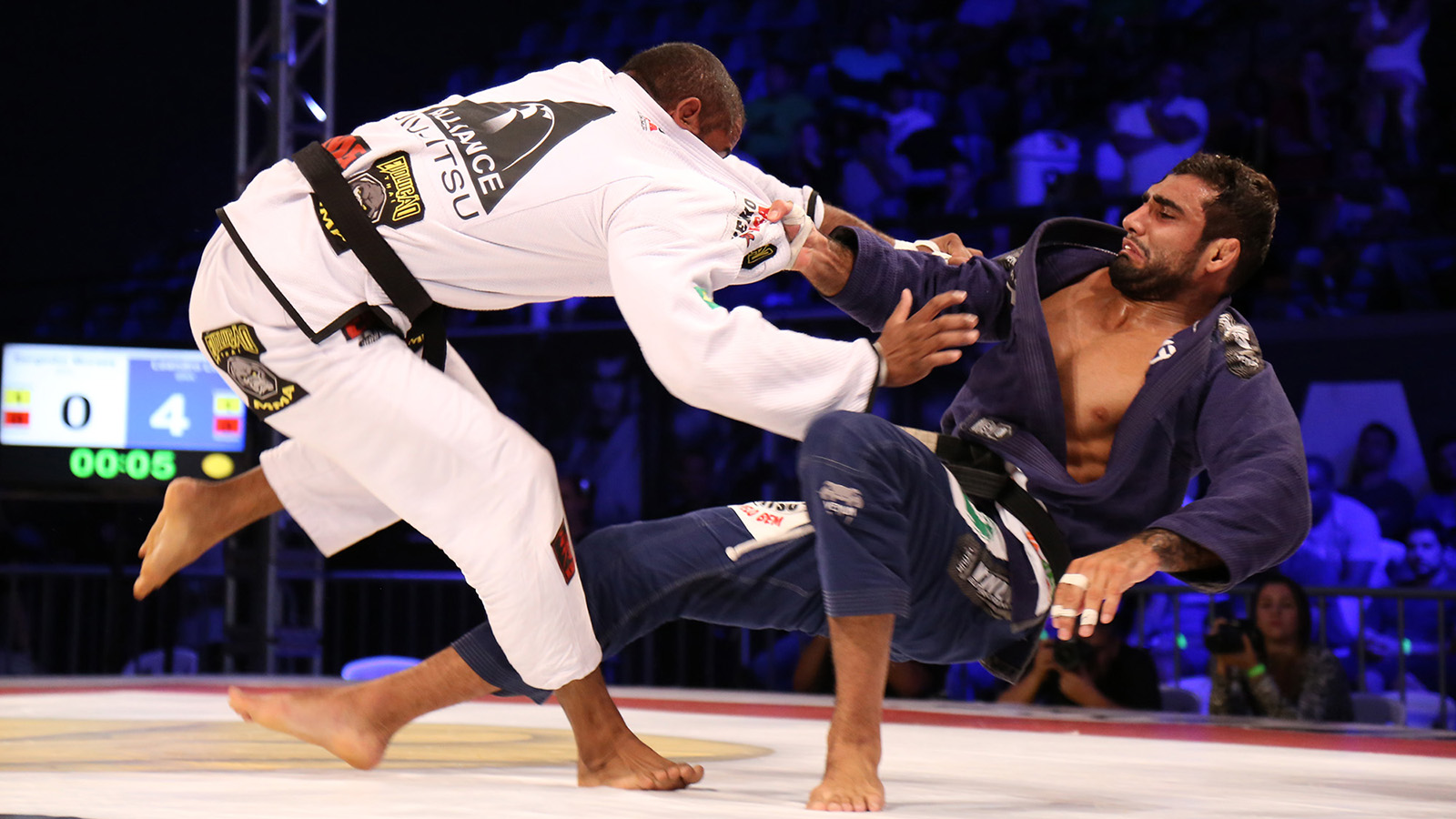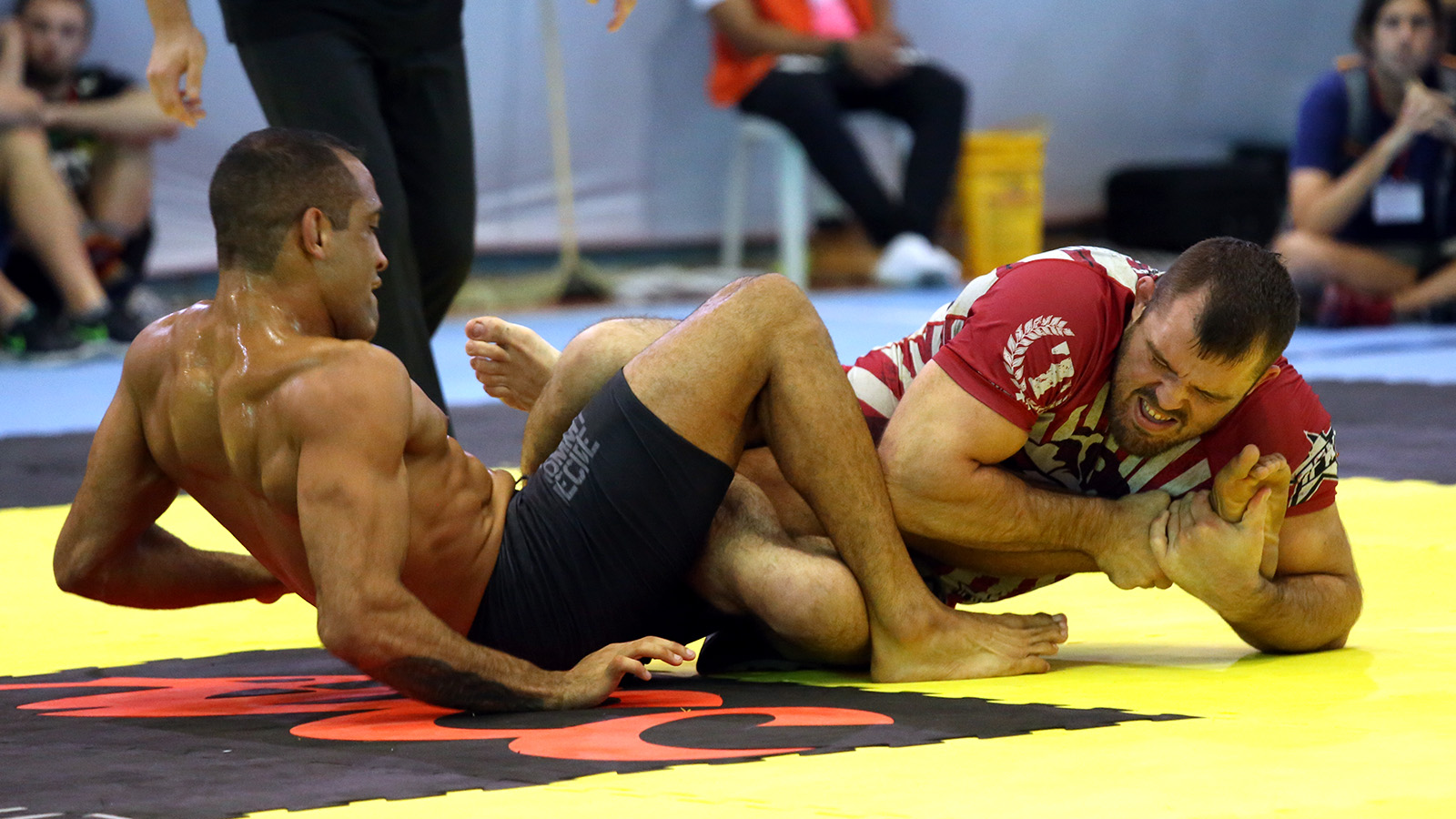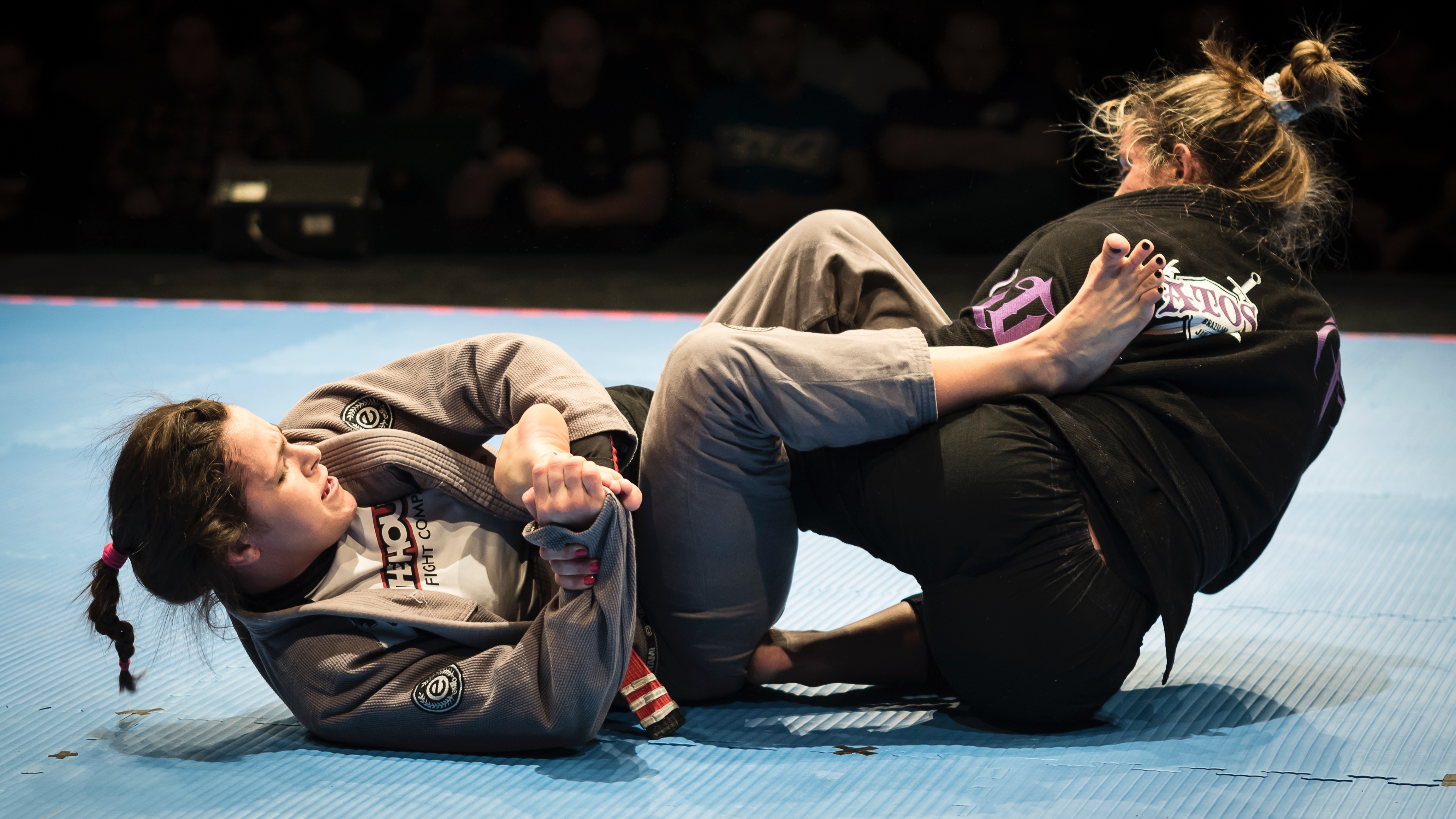Polaris Pro Jiu Jitsu Invitational, 2Sep 9, 2015 by FloGrappling Staff
Why Grappling Has More Rules Than Any Other Sport
Why Grappling Has More Rules Than Any Other Sport
By Hywel TeagueMost sports have clearly defined rules -- kick the ball here, run past this line, hit that target with this object. Grappling, however, is un

By Hywel Teague
Most sports have clearly defined rules -- kick the ball here, run past this line, hit that target with this object. Grappling, however, is unique in that it is a sport where many variations and interpretations exist, limited only by the imaginations of those who host the competitions.
It’s imperative that combat sports have clearly defined rules to ensure the safety of participants. Wherever you go and in whichever competition you enter, boxing and MMA are almost universally practiced in the same way. The international judo and wrestling federations codified their rules so that all countries who enter the Olympics know exactly what to expect when the action starts.
As grappling is a catch-all term for a multitude of styles, including jiu-jitsu, sambo, luta livre, submission wrestling and more, it has made it possible for many interpretations to exist.
At times this can appear chaotic - competitors are forced to adapt their strategies and styles as they move from one competition to the next.
On the other hand, this allows for great variety in how the art of grappling can be expressed, and competitors (and fans) will often gravitate toward events where they identify most with how the game is played...

Jiu-Jitsu Rules, OK?
The first set of codified rules governing jiu-jitsu was written in 196X by the Federacao de Jiu-Jitsu da Guanabara, a precursor to the Rio de Janeiro State Federation of Jiu-Jitsu (Federacao de Jiu-Jitsu do Estado do Rio de Janeiro, known as the FJJRio).
With Brazilian jiu-jitsu co-founder and grand master Helio Gracie among those who drafted the rules, the Federation laid out a framework that determined which submissions were permitted, defined the duration of matches and devised a clear points system that awarded positional control.
These rules were later modified by the Brazilian national federation and in due course were adopted by the International Brazilian Jiu-Jitsu Federation, which oversees the majority the esteemed World Championships among other major tournaments around the world.
It was the IBJJF’s rule book that would be adopted by other major non-affiliated federations, such as the United Arab Emirates Jiu-Jitsu Federation (UAEJJF) and upstart tournament promomters including FIVE Grappling, and it would even go on to influence independent professional promotions such as Copa Podio.
Key Jiu-Jitsu Rules

Submission Wrestling: The Birth of a New Sport
In 1998 the inaugural Abu Dhabi Combat Club (ADCC) Submission Wrestling World Championships was held. From ’98 to 2001 it was an annual affair. It went bienniel in 2003 and since then has held seven events in five countries. The brainchild of Sheikh Tahnoon Bin Zayed Al Nahyan, a member of the emirate's ruling Al Nahyan family, the ADCC was designed to be an even playing field where all grappling styles were welcome, hence the name ‘submission wrestling’.
The ADCC also devised a points system similar to that used by the IBJJF, but allowed for greater freedom in the submissions that were permitted. Matches are much longer and overtimes are employed in the event of a draw, which can result in finals matches being contested for a total of 40 minutes.
Few tournaments outside of the various ADCC country federations use these rules, meaning most grapplers rarely have the chance to compete in this style of grappling competition.
Key ADCC Rules

No Points, No Problem
In the last few years there have been a number of grappling events that have eschewed points altogether. Beginning with Metamoris in 2012, a professional event founded by Ralek Gracie, this style of competition has grown in popularity with promotions such as Polaris Professional Jiu-Jitsu Invitational, Eddie Bravo Invitational and Gracie Nationals all doing away with the scoreboards and putting the emphasis solely on submissions.
With no points at stake, competitor’s strategies are often markedly different to those employed in other events. Less emphasis is placed upon takedowns and positional control in favor of hunting for the finish.
Key Submission Only Rules
From jiu-jitsu to submission wrestling and beyond, grappling is a sport that is contested under far more rulesets than we’ve listed above. Much like the art itself, many expressions and interpretations exist, which is one of the most appealing and attractive qualities grappling has to offer.
Interested in checking out a submission-only grappling event? Polaris Pro takes place on Sept 12th. Watch it live exclusively here on FloGrappling!
Most sports have clearly defined rules -- kick the ball here, run past this line, hit that target with this object. Grappling, however, is unique in that it is a sport where many variations and interpretations exist, limited only by the imaginations of those who host the competitions.
It’s imperative that combat sports have clearly defined rules to ensure the safety of participants. Wherever you go and in whichever competition you enter, boxing and MMA are almost universally practiced in the same way. The international judo and wrestling federations codified their rules so that all countries who enter the Olympics know exactly what to expect when the action starts.
As grappling is a catch-all term for a multitude of styles, including jiu-jitsu, sambo, luta livre, submission wrestling and more, it has made it possible for many interpretations to exist.
At times this can appear chaotic - competitors are forced to adapt their strategies and styles as they move from one competition to the next.
On the other hand, this allows for great variety in how the art of grappling can be expressed, and competitors (and fans) will often gravitate toward events where they identify most with how the game is played...

Jiu-Jitsu Rules, OK?
The first set of codified rules governing jiu-jitsu was written in 196X by the Federacao de Jiu-Jitsu da Guanabara, a precursor to the Rio de Janeiro State Federation of Jiu-Jitsu (Federacao de Jiu-Jitsu do Estado do Rio de Janeiro, known as the FJJRio).
With Brazilian jiu-jitsu co-founder and grand master Helio Gracie among those who drafted the rules, the Federation laid out a framework that determined which submissions were permitted, defined the duration of matches and devised a clear points system that awarded positional control.
These rules were later modified by the Brazilian national federation and in due course were adopted by the International Brazilian Jiu-Jitsu Federation, which oversees the majority the esteemed World Championships among other major tournaments around the world.
It was the IBJJF’s rule book that would be adopted by other major non-affiliated federations, such as the United Arab Emirates Jiu-Jitsu Federation (UAEJJF) and upstart tournament promomters including FIVE Grappling, and it would even go on to influence independent professional promotions such as Copa Podio.
Key Jiu-Jitsu Rules
- Black belt matches are 10 minutes in duration with no overtime.
- No twisting leglocks, such as heel hooks, are permitted at any belt level. Only straight ankle locks are permitted from white to purple belt.
- Points are awarded by positions, takedowns and sweeps: 4 for mount or back control, 3 for passing the guard, 2 for knee ride, 2 for a sweep, and 2 for a takedown.
- Advantages are subjective points that run parallel to the principal points as detailed above. They are awarded by the referee based on intent of action, eg a near submission which forces a defensive action such as an escape will be awarded an advantage.
- Competitions are exclusively contested as gi or no-gi.

Submission Wrestling: The Birth of a New Sport
In 1998 the inaugural Abu Dhabi Combat Club (ADCC) Submission Wrestling World Championships was held. From ’98 to 2001 it was an annual affair. It went bienniel in 2003 and since then has held seven events in five countries. The brainchild of Sheikh Tahnoon Bin Zayed Al Nahyan, a member of the emirate's ruling Al Nahyan family, the ADCC was designed to be an even playing field where all grappling styles were welcome, hence the name ‘submission wrestling’.
The ADCC also devised a points system similar to that used by the IBJJF, but allowed for greater freedom in the submissions that were permitted. Matches are much longer and overtimes are employed in the event of a draw, which can result in finals matches being contested for a total of 40 minutes.
Few tournaments outside of the various ADCC country federations use these rules, meaning most grapplers rarely have the chance to compete in this style of grappling competition.
Key ADCC Rules
- Matches are 10 minutes, with a possible two 5-minute periods of overtime in case of a draw. Finals are 20 minutes, with two 10-minute overtime periods in the case of a draw.
- No points are counted in the first five minutes of a match. In the finals, points are only counted after 10 minutes.
- If no points are scored, matches are decided by decision.
- Save for full nelson-style crucifixes, all submissions are legal including leg locks.
- Points are awarded by positions, takedowns and sweeps: 3 for mount, back or side control, 2 for knee ride, 2 for a sweep, and 2 for a takedown (4 points for each if the technique ends passed the guard).
- Pulling guard is penalised with a -1 point.
- Picking up your opponent and slamming them is a legal way to escape a submission hold.
- Competitors can choose to compete in whichever attire they prefer, although grabbing or use of the clothing is not permitted.

No Points, No Problem
In the last few years there have been a number of grappling events that have eschewed points altogether. Beginning with Metamoris in 2012, a professional event founded by Ralek Gracie, this style of competition has grown in popularity with promotions such as Polaris Professional Jiu-Jitsu Invitational, Eddie Bravo Invitational and Gracie Nationals all doing away with the scoreboards and putting the emphasis solely on submissions.
With no points at stake, competitor’s strategies are often markedly different to those employed in other events. Less emphasis is placed upon takedowns and positional control in favor of hunting for the finish.
Key Submission Only Rules
- Matches range from 15-minutes, to having no time limit at all.
- No points or penalties are awarded. Matches end in a draw or sometimes judges’ decision.
- Matches are disputed both gi and no-gi.
From jiu-jitsu to submission wrestling and beyond, grappling is a sport that is contested under far more rulesets than we’ve listed above. Much like the art itself, many expressions and interpretations exist, which is one of the most appealing and attractive qualities grappling has to offer.
Interested in checking out a submission-only grappling event? Polaris Pro takes place on Sept 12th. Watch it live exclusively here on FloGrappling!